As the Sesquicentennial approaches, parishes probe their past.
By Jim Naughton
At St. Stephen’s Church in Columbus, a story is told about a Black woman named Colleen Mitchell who visited the church one Sunday morning in the late 1950s. An usher approached her at the back of the church and suggested that she might be more comfortable at a nearby church. What distinguished that church—St. Philip—from St. Stephen’s went without saying.
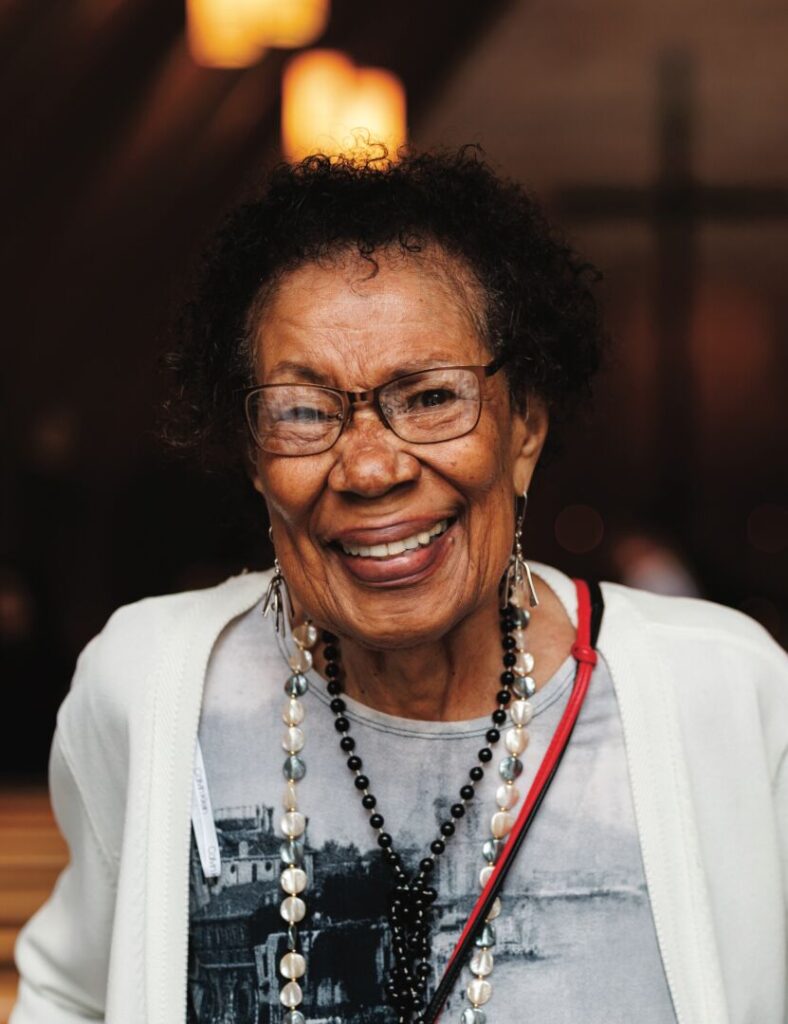
“No,” replied Mitchell, a social worker with a masters in music from Ohio State. “I am where I belong.” And she took her service bulletin and sat down.
The people who tell that story include Mignonne Whitlow, Mitchell’s younger sister, who is now in her 90s and still active at St. Stephen’s, and Joseph Rutter, the church’s historian. Neither can say for sure whether the usher’s tone implied that he did not want Mitchell at St. Stephen’s, or whether he was actually concerned for her comfort and thought she might feel more at home at St. Philip Church, about 5 miles southeast.
But whatever the usher’s intentions, Colleen Mitchell knew her own mind. She stayed. And she flourished.
“Colleen was not a warrior,” her sister says of Mitchell, who died in 2002. “She was comfortable with her associations, and very active there.” And not only within the parish, but in the diocese and the wider church. Mitchell served on Diocesan Council, the Standing Committee, and the churchwide Board of Ecumenical Relations. For a time she was also lay minister of programs at St. Stephen’s and ecumenical relations officer for the diocese.
Not every parish has a Colleen Mitchell in its past. But through the Parish History Project, initiated by Bishop Wayne Smith and approved by the 2022 diocesan convention, the diocese has made a firm commitment to seeking a deeper understanding of its own history, particularly the role of race and racism in shaping the diocese, as it prepares to celebrate is sesquicentennial in 2025.
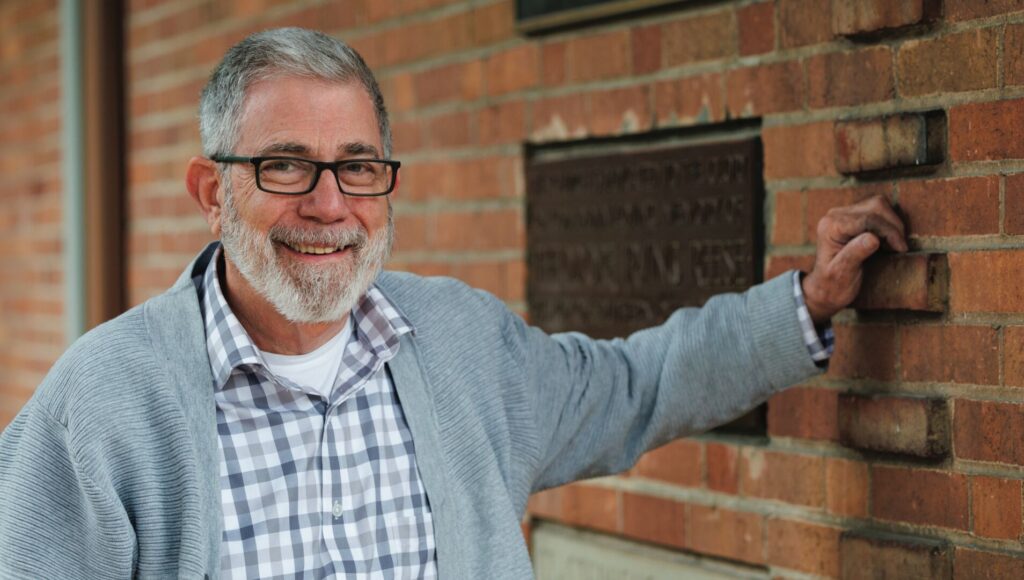
“As we look at 150 years it is important to look honestly,” says Robin Holland of St. Philip, Columbus, a member of the Parish History Project team that is overseeing the work on behalf of the Sesquicentennial Committee. “I think one thing we want to do is tell stories that haven’t been told. We want something that clearly identifies exactly who we are, what we’ve done as a diocese, what we could have done and didn’t do, the relationships among churches, the relations among churches and the diocese, and the relationship of our diocese to the larger church.”
To energize this work, the group has hired Donna DeBlasio, a public historian and professor emerita of history at Youngstown State University. She will work with 26 churches, including a mix of historically Black churches, churches born of outreach in immigrant communities, churches that took the lead in working toward LGBTQ equality, “mother churches” that planted other churches and suburban churches.
“Our diocese is kind of strange in the variety of landscapes we’ve got,” Holland says. Those landscapes range from major metropolitan areas to Appalachian river towns, and the task force is committed to representing each demographic and geographic region.
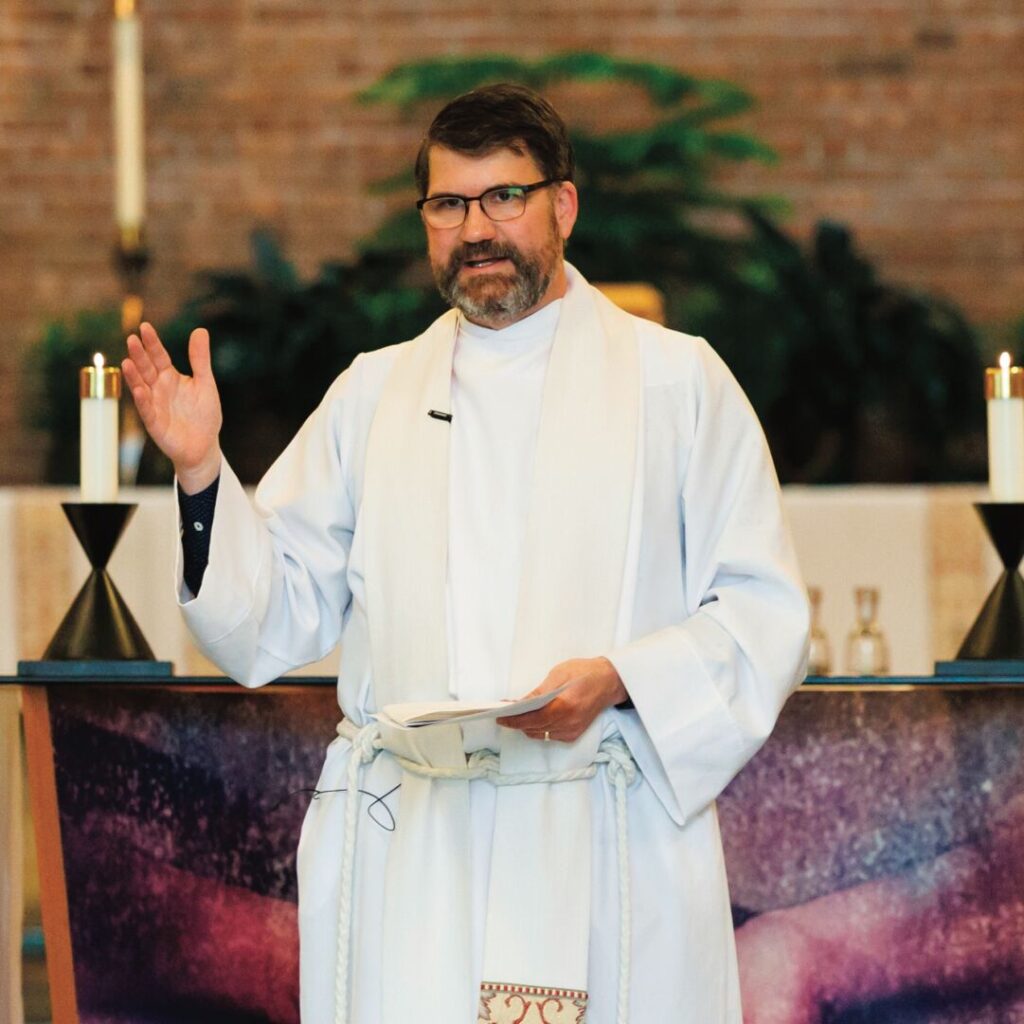
In addition to its congregationally based work, the diocese will also designate 10 individuals whose personal stories illuminate the larger story of the diocese, says the Rev. Karl Stevens, rector of St. Stephen’s, a member of the Sesquicentennial Committee and co-chair of the Reparations Task Force and the Parish History Project Team. The hope, he says, is to have a preliminary document to share at the 2024 diocesan convention and a book for the 2025 Sesquicentennial Celebration.
“We have been trying to push this project for a year and a half and only five parishes have been able to write these histories on their own,” Stevens says. “So that was the impetus behind hiring a historian.”
The resolution approved by diocesan convention stresses the importance of “includ[ing] the voices of all including those who have been oppressed or marginalized,” particularly Black and Brown people.
“The point isn’t to shame anyone,” Stevens says. “The point is to allow us to be truthful about all the different ways in which we both serve and fail to serve and grow in our understanding.”
St Stephen’s, which sits about half a mile east of Ohio Stadium on the Ohio State University campus, is among the few parishes already deep into the process of researching its history. Their progress is due largely to the efforts of Rutter, who says he has been “a church history nerd” since childhood.
“It’s always fascinated me,” he says. “When you are really young the church looks so permanent and old. The building I attended as a kid was very Romanesque. I lived across the street. I had a lot of time to fantasize about it. We would play knights.”
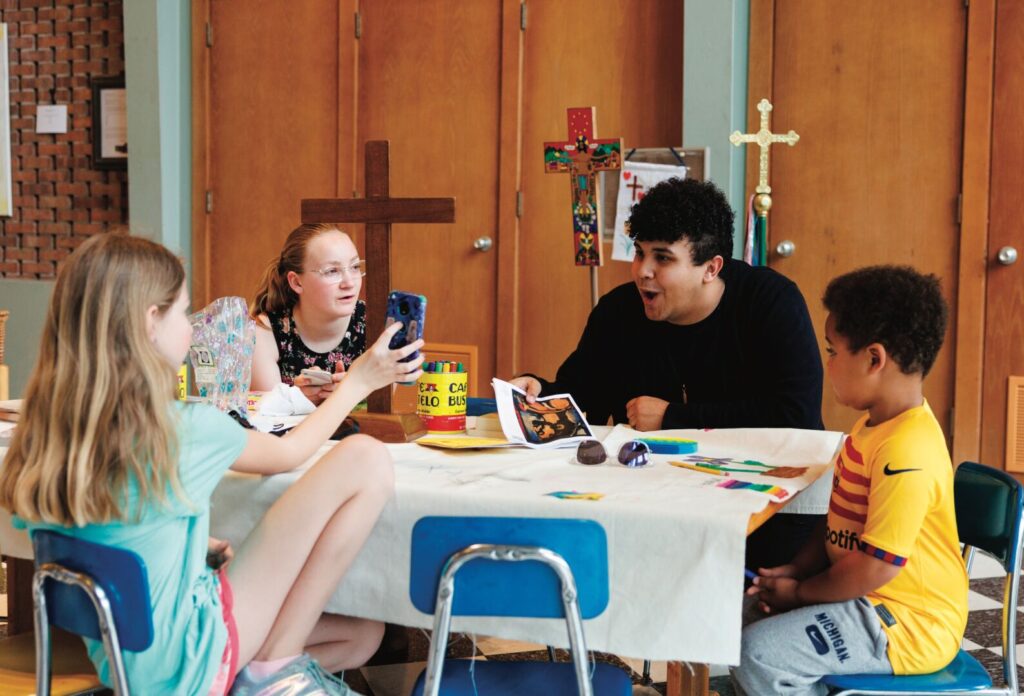
Rutter, who came to Columbus as a freshman at Ohio State in 1968, can tell you that the current church building includes bricks made by Philander Chase for a building at Kenyon College that were then sold as a fundraiser after a fire, and that the white stone that sits atop the cornerstone comes from Canterbury Cathedral.
In several years of research, he has woven together the story of two separate churches, both established by Trinity Church, Columbus, that merged uneasily in 1928. The Church of the Good Shepherd was founded in 1866 in the old Union Railroad Depot to minister to immigrant railroad, stockyard and industrial workers in a neighborhood called Flytown for the speed with which housing, often constructed of discarded packing materials, “flew” up.
While the church continued its work among industrial workers and immigrants, its liturgy became increasingly oriented to the educated classes. “Many of the founding families of Trinity and of Good Shepherd were some of the most philanthropic and generous benefactors of the community, but they were also conscious of their position within the educated and wealthy classes and had no intention of inviting the less advantaged folk to sit with them in church,” Rutter writes in “A Social History of St. Stephen’s Church, Columbus, Ohio.”
The other Trinity-sponsored church, the Chapel of the Holy Spirit, was founded in 1916 on the northern edge of the quickly growing campus of the Ohio State University, which had been founded in 1878. In 1913, Bishop Boyd Vincent had established St. Hilda’s House on the southern edge of the campus as a residence for single female college students who were not yet allowed to live in the university’s dormitories, and the women of
St. Hilda’s formed the altar guild of the new church. The two parishes merged, largely because trends in
real estate pushed many of Good Shepherd’s families into the bounds of Holy Spirit, its younger and more evangelically inclined neighbor. Within ten years, the newly named St. Stephen’s became one of the ten largest churches in the city.
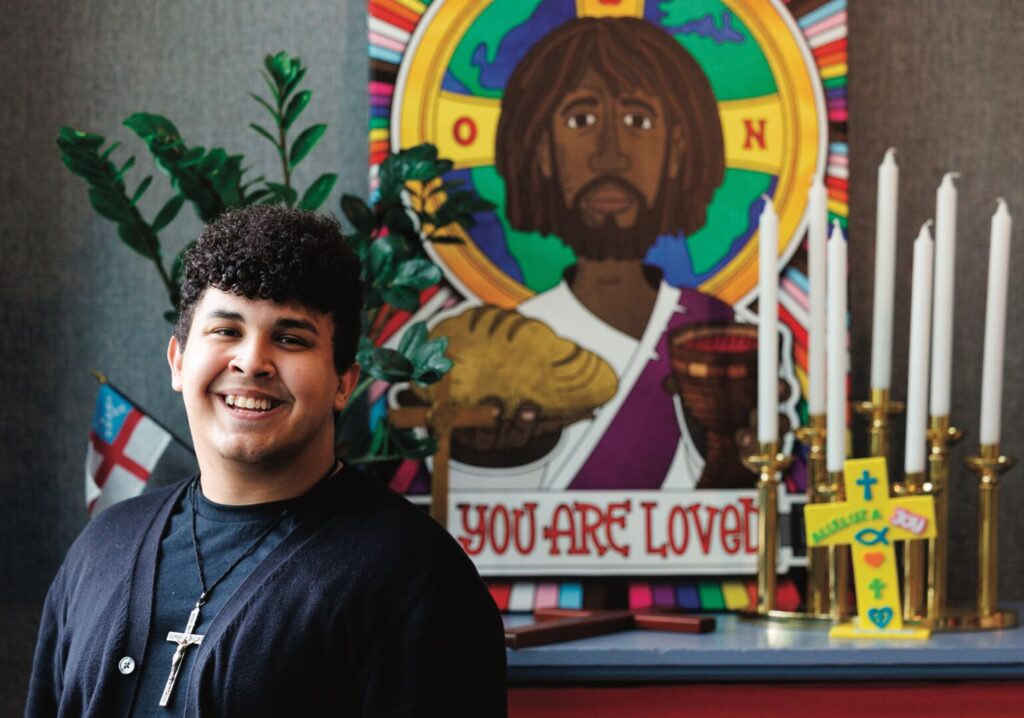
In the years after World War II, St. Stephen’s became known for its progressive stances on political issues. It had the honor of being picketed by the John Birch Society for its support of racial integration. In May 1970, when Ohio State closed its doors for two weeks to quell campus unrest after the Ohio National Guard killed four people at Kent State University, St. Stephen’s remained open and hosted the university’s faculty senate discussions about how to respond to the tensions.
Yet for all its progressivism, the congregation, whose modernist building was completed in 1952, had few Black members before Mitchell and, later, her younger sister began attending in the wake of unpleasantness, the details of which Whitlow no longer remembers, at St. Philip, their previous parish.
“One visit was all it took for me, and there I stayed,” Whitlow says.
Despite the lack of Black parishioners, she felt welcomed. “It didn’t feel like people were going out of their way. It wasn’t like they saw a Black face and didn’t want to lose it. I felt very comfortable and I also felt they were comfortable having me there, and I think that was it more than anything.”
Whitlow stayed, raised her children, felt her faith deepening, became a regular pledger and was later part of the parish’s stewardship efforts. She was a mainstay of St. Stephen’s work with B.R.E.A.D., a congregation-based social justice advocacy organization, and most recently served on the Justice Ministry Team that facilitates St. Stephen’s participation in B.R.E.A.D.
In May she was inducted into the Society of St. Simeon and St. Anna. “Wow, that’s awesome,” she says when reminded of this honor.
Despite the legacy of Whitlow and her late sister, there are still few Black parishioners at St. Stephen’s, or at most churches in the diocese. The story of Black Episcopalians in most congregations across the country is a story of absence, and often intentionally so.
Black Episcopalians were either intentionally segregated from white churches or chose to segregate themselves, and Robin Holland says it would be interesting to know which. Church investment followed the migration of white people from cities, a migration facilitated by highways built through primarily Black and mixed neighborhoods. Two of the diocese’s four historically Black parishes—St. Philip, Columbus and St. Margaret’s, Trotwood, lost buildings to highway development.
“I think this is an appropriate time to be thinking about migration to the suburbs and disinvestment in the city,” says Stuart Hobbs, director for education and training at Ohio State’s Center for Clinical and Translational Science, who is a member of St. Stephen’s and serves on the Parish History Project Team.
“It wasn’t necessarily always ‘We have to get away from the Black people or keep them out of the church,’ but that was sort of in the air,” says Hobbs, who holds a doctorate in history. “Richard Rohr said one of Paul’s great successes was talking about how whether Jew or Greek, slave or free, male or female, all were one in Christ, and how that was part of the great appeal to people of the Christian message at the time. That all people are equal is obvious, but that’s not really how things work in practice.”
The planners of the Sesquicentennial observance believe the parish history project will significantly deepen the diocese’s understanding of these issues.
“We are at a cultural moment that I think can only be defined as the death of Christendom, where this historic allyship between the church and the state is coming to an end,” Stevens says. “That means the church has to rethink what it is. We do not know who we are if we are not the upholders and allies of the state.”
To discover this new identity, he says, the church needs to ask itself, “Where have we always been serving those who aren’t powerful?” And one way of doing that is to explore the “very mixed story” of the diocese’s history. But he says that it is, ultimately, a story of all of the parishes being “immersed in a Christian ethic that says we are to serve the least among us.”
Meanwhile at St. Stephen’s, the work continues. Darien McCoy, the parish’s director of children and youth formation, arrived at the church in 2020 during the COVID pandemic. “The first service was outside, we were masked and the first thing I noticed was that I was the only person of color at the service,” he says. “But I didn’t think much of it. It was very welcoming. I felt I had landed in the right place.”
McCoy, who is biracial, worked as a summer camp counselor at Procter Center and spent a year in the Episcopal Service Corps at Brendan’s Crossing in Cincinnati before accepting his job at St. Stephen’s.
He felt encouraged by the church’s Black Lives Matter and LGBTQ flags, by Stevens’ presence at a Black Lives Matter protest in the wake of the murder of George Floyd by a Minneapolis police officer, and by conversations he had had with Stevens and others.
All but one of his students is white, McCoy says, but the class meets beneath “my first purchase for my classroom,” a poster of Jesus “with dark hair, lips like mine and a nose like mine, and he is holding the elements of Communion.” One of his proudest days, he says, is when one of his students, finding some materials previously used in formation programs at the parish, wondered aloud if Jesus looked like a white European, and then decided that he couldn’t have.
Read this story in the Summer 2023 edition of Connections Magazine.
